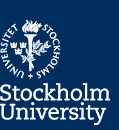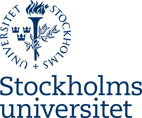Bacterial virulence factors during sepsis
Acute meningococcal sepsis is a rapid and life-threatening disease with overwhelming inflammatory response and high mortality. The aim is to better understand the infection process in order to develop novel ways to treat and cure severe bacterial infections. The interaction between human cells and the human-specific pathogen N. meningitidis is highly dynamic and tightly regulated. Initially the bacteria must communicate with the host cells, and then exploit existing signal transduction networks to survive and spread. We investigate important virulence factors with a key role in regulating and fine-tuning virulence of N. meningitidis. By mapping of the molecular mechanisms during the infection process we aim to identify better ways to prevent disease development.
Cancer and Helicobacter pylori
Microbial pathogens have developed a variety of strategies to manipulate host cell function. When the immune system fails to battle an infection or if the infection remains untreated, the disease may develop into a chronic long-term infection that can cause cell damage and cancer. Helicobacter pylori is a gram-negative bacterium that colonizes the human gastric and duodenal mucosa. H. pylori infection is usually asymptomatic and the bacteria can persist in the gastric environment for decades and even throughout the life span of the host. In some individuals, the infection develops into symptomatic inflammation that gives rise to chronic gastritis, peptic ulcer and gastric cancer. Both bacterial and host factors are thought to contribute to these disease outcomes. We are currently examining the detailed mechanisms of how H. pylori interferes with host cell proteins and receptors and how these processes contribute to development of disease, cell damage and malignancies. The aim is to identify novel ways to prevent immune evasion, cell damage and cancer caused by bacteria.
Pilus-mediated motility
Type IV pili (fimbriae) are long hair-like structures that mediates initial attachment of bacteria to host cells. A characteristic feature of Type IV pili is that these pili can retract and generate considerable forces by the use of a membrane associated biological motor.
In this project we study the molecular mechanisms of pilus-mediated motility and pilus retraction. Deeper understanding of this biological motor system opens the possibility to inhibit pilus retraction, which will block tight adhesion of bacteria to host cells, as well as bacterial invasion and spread. Biological motors have developed evolutionary during long time spans, and better understanding of the design is highly relevant for applications on artificial molecular motors in nano-technological devices.
Bacterial infection and antimicrobial peptides
In mammals, antibacterial peptides (AMPs) represent an important first line defence against invading pathogens. This project involves studies of how bacteria interact with endogenous AMPs or synthetic AMPs. We are currently characterizing how Neisseria respond to AMPs, with changes in transporter systems, capsular gene expression, and defined sets of outer membrane proteins. The long-term goal is to identify ways to make bacteria more sensitive to AMPs, or to increase AMP expression in host cells, thus generating novel ways to fight bacterial infections. Detailed understanding of the effector molecules in innate immunity and their induction might in the future lead to alternative treatments, which is of importance as antibiotic resistant bacterial strains are evolving with enormous costs for health care.
Interaction with the normal flora
The first step in the process of establishing mucosal infection is adherence of the bacteria to target cells. The normal microbiota prevents colonization of pathogenic bacteria and represents an important first line of defence. Lactobacilli belong to the normal microbiota and colonize various parts of the body. These bacteria are common inhabitants of the mucus membranes in the oral-pharyngeal tract. We investigate how lactobacilli influence colonization of the pharyngeal pathogens Neisseria meningitidis and Streptococcus pyogenes. Bacteria of the normal microbiota can affect pathogens by acting directly on the pathogen or by affecting the host cells making them less susceptible to pathogen colonization. In our studies we found examples of that lactobacilli act on both these levels. We are currently elucidating the mechanisms of the lactobacillus-mediated prevention of bacterial colonization.





